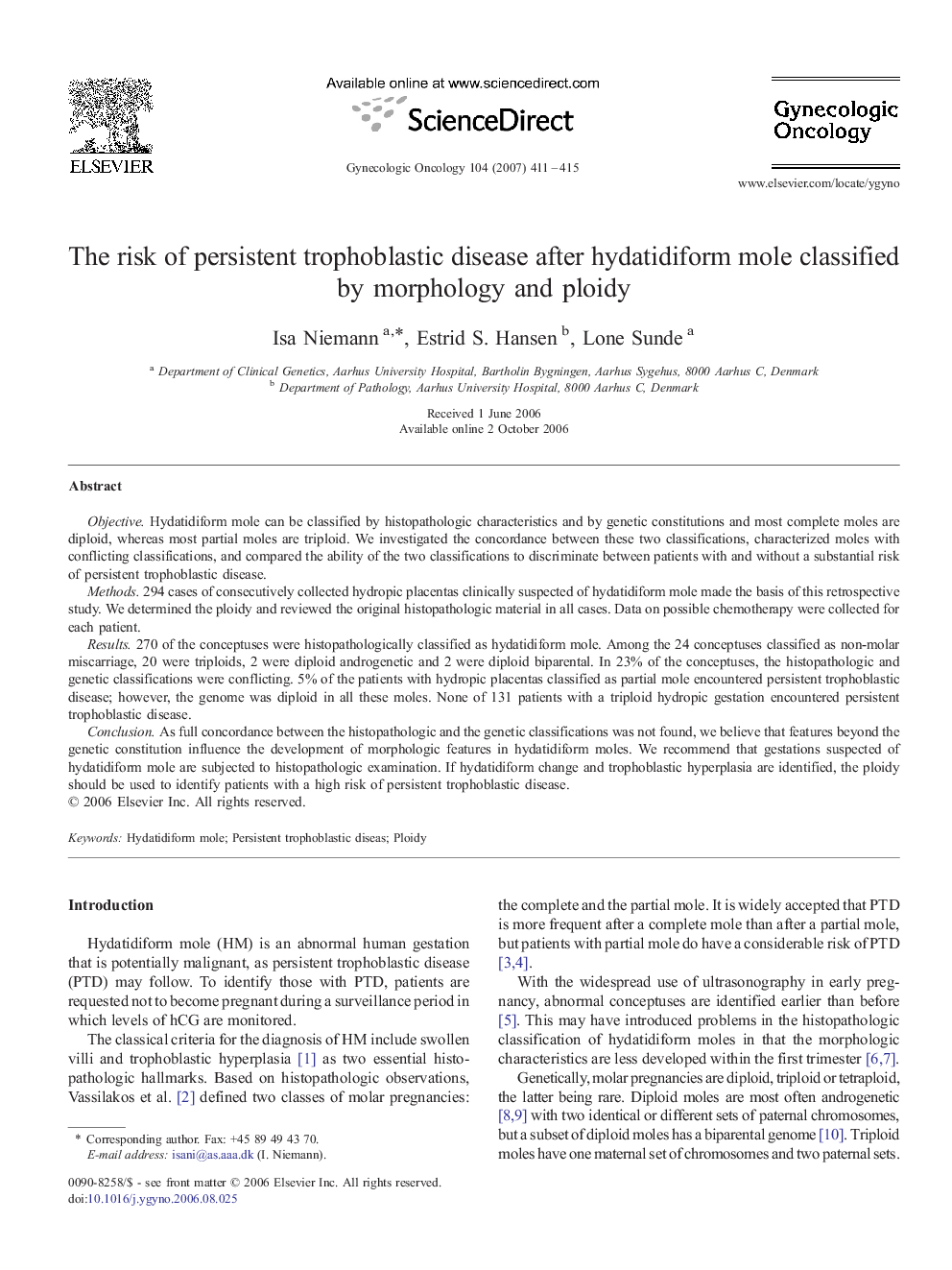| Article ID | Journal | Published Year | Pages | File Type |
|---|---|---|---|---|
| 3946537 | Gynecologic Oncology | 2007 | 5 Pages |
Objective.Hydatidiform mole can be classified by histopathologic characteristics and by genetic constitutions and most complete moles are diploid, whereas most partial moles are triploid. We investigated the concordance between these two classifications, characterized moles with conflicting classifications, and compared the ability of the two classifications to discriminate between patients with and without a substantial risk of persistent trophoblastic disease.Methods.294 cases of consecutively collected hydropic placentas clinically suspected of hydatidiform mole made the basis of this retrospective study. We determined the ploidy and reviewed the original histopathologic material in all cases. Data on possible chemotherapy were collected for each patient.Results.270 of the conceptuses were histopathologically classified as hydatidiform mole. Among the 24 conceptuses classified as non-molar miscarriage, 20 were triploids, 2 were diploid androgenetic and 2 were diploid biparental. In 23% of the conceptuses, the histopathologic and genetic classifications were conflicting. 5% of the patients with hydropic placentas classified as partial mole encountered persistent trophoblastic disease; however, the genome was diploid in all these moles. None of 131 patients with a triploid hydropic gestation encountered persistent trophoblastic disease.Conclusion.As full concordance between the histopathologic and the genetic classifications was not found, we believe that features beyond the genetic constitution influence the development of morphologic features in hydatidiform moles. We recommend that gestations suspected of hydatidiform mole are subjected to histopathologic examination. If hydatidiform change and trophoblastic hyperplasia are identified, the ploidy should be used to identify patients with a high risk of persistent trophoblastic disease.
